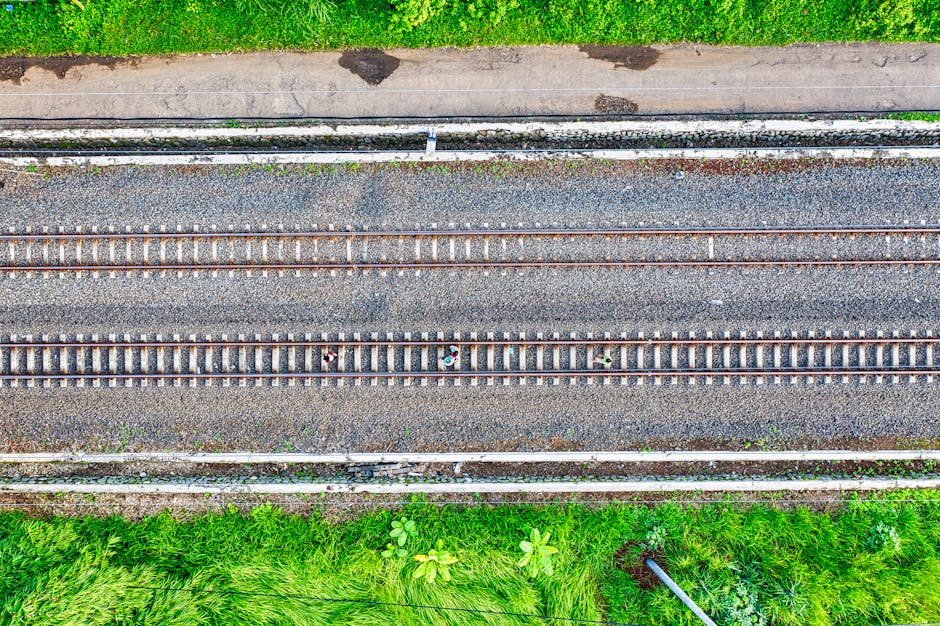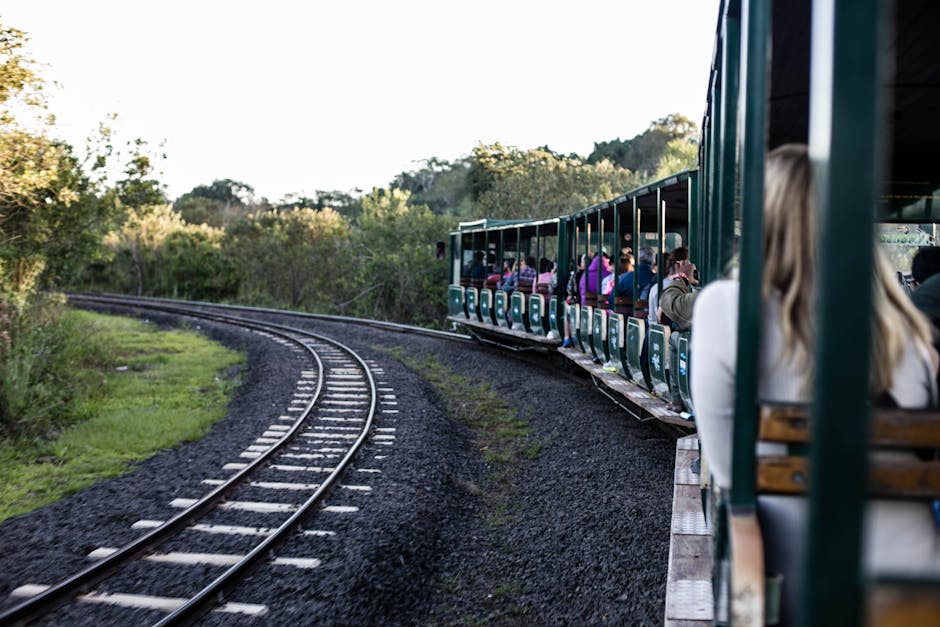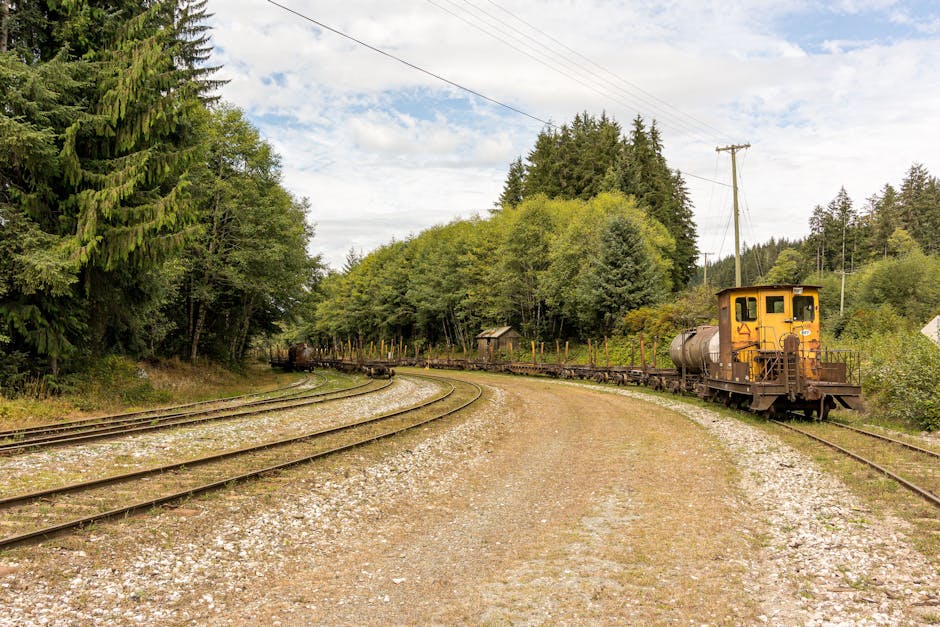Rail Transport Sustainability: Navigating the Path to a Greener Future
When we think about sustainable transportation, our minds often drift to electric cars, biking lanes, or even public buses. However, one of the most environmentally friendly and efficient modes of transportation has been chugging along for centuries rail transport. In this comprehensive guide, we delve deep into the world of rail transport sustainability, exploring its history, current status, future potential, and the impact it has on our planet.
The Environmental Impact of Rail Transport

Rail transport is widely recognized as one of the most sustainable forms of transportation available today. Trains produce significantly fewer greenhouse gas emissions compared to cars, trucks, and airplanes, making them a more environmentally friendly option for both passengers and freight. The energy efficiency of trains, especially electric ones, further contributes to their green credentials.
According to a study by the International Energy Agency, rail transport is responsible for only 2% of global transportation-related CO2 emissions, despite moving over 8% of the world’s passengers and 7% of global freight. This stark contrast highlights the environmental benefits of rail transport and its potential to reduce the carbon footprint of the transportation sector.
Advancements in Rail Technology

Over the years, advancements in rail technology have further enhanced the sustainability of rail transport. The introduction of high-speed rail systems in various countries has not only improved travel times but also significantly reduced energy consumption per passenger kilometer. These systems are powered by electricity, which can be sourced from renewable energy, further lowering their environmental impact.
Additionally, innovations like regenerative braking, which allows trains to recover energy when slowing down or stopping, have made rail transport even more energy-efficient. By harnessing this energy, trains can reduce their electricity consumption and, in turn, decrease their overall environmental footprint.
The Role of Rail Transport in Reducing Traffic Congestion

One of the often-overlooked benefits of rail transport sustainability is its role in reducing traffic congestion. By moving large numbers of passengers and freight over long distances, trains help alleviate the strain on roads, highways, and airports. This not only reduces the number of vehicles on the road but also lowers the overall carbon emissions generated by transportation.
For example, a single freight train can replace hundreds of trucks on the road, resulting in less traffic congestion, fewer accidents, and lower emissions. Similarly, high-speed rail systems can provide a viable alternative to short-haul flights, reducing the number of planes in the sky and their associated environmental impact.
The Economic Benefits of Investing in Rail Transport

Aside from its environmental advantages, rail transport also offers significant economic benefits. Investing in rail infrastructure creates jobs, stimulates local economies, and boosts the overall efficiency of transportation networks. By expanding and modernizing rail systems, countries can improve their connectivity, trade relationships, and competitiveness in the global market.
Furthermore, rail transport can help reduce the costs associated with road maintenance, accidents, and environmental damage caused by other modes of transportation. Studies have shown that the societal benefits of investing in rail infrastructure often outweigh the initial costs, making it a wise long-term investment for governments and businesses alike.
Challenges and Controversies Surrounding Rail Transport Sustainability
Despite its many advantages, rail transport sustainability is not without its challenges and controversies. One of the main criticisms of rail transport is its high initial costs of infrastructure development and maintenance. Building new rail lines or upgrading existing ones can require significant financial investments, which may deter some governments or private investors from committing to sustainable rail projects.
Additionally, the competition from other modes of transportation, such as cars, trucks, and airplanes, presents a hurdle for the widespread adoption of rail transport. In regions where car culture is prevalent or air travel is cheaper and more convenient, convincing people to switch to trains can be a tough sell. Addressing these challenges requires a multi-faceted approach that combines policy incentives, public awareness campaigns, and strategic partnerships.
Expert Opinions on Rail Transport Sustainability
To gain further insights into the world of rail transport sustainability, we reached out to Dr. Sarah Green, a leading expert in sustainable transportation at the University of Greenfield. According to Dr. Green, “Rail transport offers a unique opportunity to reduce our carbon footprint and create more sustainable cities. By investing in modern rail systems and promoting a modal shift towards trains, we can significantly impact our environment for the better.”
Dr. Green’s research has focused on the intersection of urban planning, transportation policy, and environmental sustainability, shedding light on the importance of integrating rail transport into broader sustainability initiatives. Her work highlights the potential of rail transport to transform our cities, reduce emissions, and improve the quality of life for residents.
Common Misconceptions About Rail Transport Sustainability
Despite its numerous benefits, rail transport sustainability is often misunderstood or overlooked by the general public. Common misconceptions include the belief that trains are outdated or inefficient compared to cars or planes. In reality, modern trains are equipped with state-of-the-art technology, energy-efficient systems, and comfortable amenities that rival those of other modes of transportation.
Another misconception is that rail transport is limited in its reach or connectivity. While it’s true that some regions may have limited access to rail networks, ongoing investments in rail infrastructure are expanding the reach of trains to more communities and destinations. By addressing these misconceptions and promoting the advantages of rail transport, we can encourage more people to choose trains as a sustainable and efficient mode of transportation.
Conclusion: Paving the Way for a Greener Future
As we wrap up our exploration of rail transport sustainability, it’s clear that trains play a crucial role in building a greener, more sustainable future. From reducing carbon emissions and traffic congestion to stimulating economic growth and providing efficient transportation options, rail transport offers a myriad of benefits that cannot be ignored.
By investing in modern rail infrastructure, promoting the use of high-speed rail systems, and raising awareness about the environmental advantages of trains, we can pave the way for a more sustainable transportation sector. As we journey towards a greener future, let’s not forget the humble train and its power to transform our cities, economies, and environment for generations to come.




